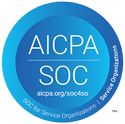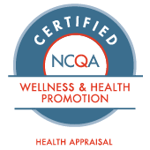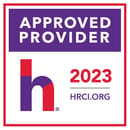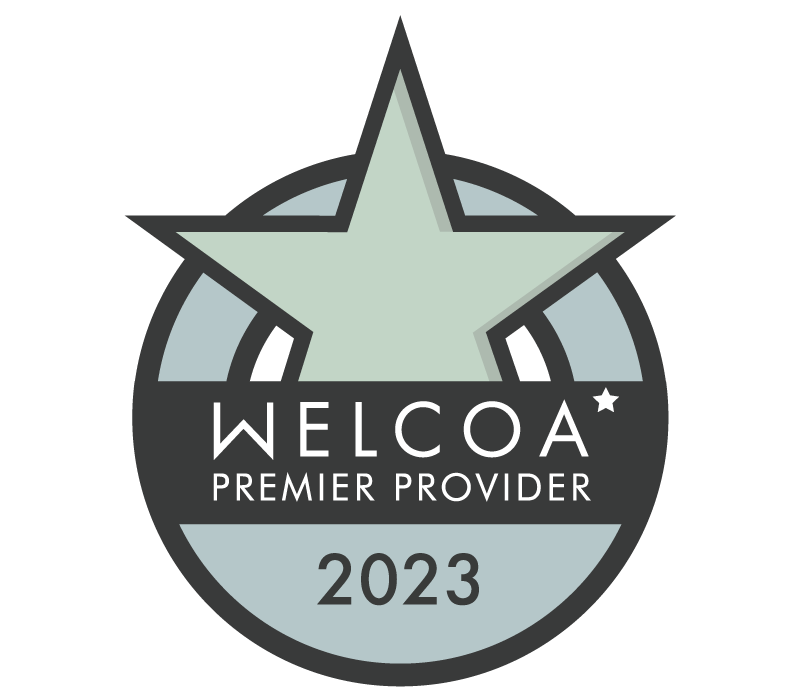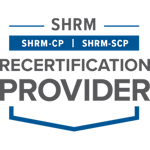Most companies in today’s market understand the importance of workplace wellness. It increases productivity, lowers healthcare costs, promotes employee retention, attracts top talent, fosters a healthy work culture, and improves employee satisfaction.
Where companies struggle, however, is maintaining employee engagement over time.
Too often, employers use a one-size-fits-all approach to their workplace wellness program offerings, rather than meeting employees where they are and inspiring them to achieve their well-being goals. In the same way the healthcare industry has quickly become more patient-centric, workplace wellness programs must become person-centric.
With over 600 customers using WellRight’s complete wellness platform, WellRight has helped organizations across industries and geographies to design successful workplace wellness solutions. Over time, we’ve noticed that our customers with the highest levels of workplace wellness program engagement (80% or higher) share a common thread.
Their secret? They adhere to most, if not all, of our workplace wellness program best practices in the following seven categories:
Best Practices for Workplace Wellness Program Success
- Program structure and support
- Wellness champion networks
- Lifestyle coaching
- Incentive design
- Communications
- Biometric health screening
- Outcomes programming
Let’s dive into the best practices in each of these categories.
Click to expand each section below (you can use the arrow on the right-hand side to navigate back to the top of the page).
 Companies with 80% or higher workplace wellness engagement share similarities in the way they have structured their wellness programs. Here are the best practices we recommend for workplace wellness success.
Companies with 80% or higher workplace wellness engagement share similarities in the way they have structured their wellness programs. Here are the best practices we recommend for workplace wellness success.
1. Maintain a consistent program structure.
Employees have different wellness needs, but the need for consistency is universal. Your corporate wellness program should be consistent year after year. Program specifics, such as the actual challenges, may change, but both wellness program administrators and employees should always know exactly where to sign up and receive updates, how to earn rewards, and when programs begin and end.
This consistency encourages the formation of habits, making it easier for employees to turn the wellness program into a regular part of their day, boosting ongoing participation.
2. Offer enough choices, but not too many.
In his book and subsequent TEDTalk, The Paradox of Choice, psychologist Barry Schwartz introduced the phenomenon that too many choices prohibits people from making any choice. He refers to a study called “The Jam Experiment” in which grocery store shoppers were 10 times more likely to purchase jam when they were only given two options, rather than an entire shelf’s worth.
This concept also applies to your workplace wellness program. Companies with over 80% engagement limit the number of choices available to their employees. The subset of challenges may change every year, every six months, or every quarter, but the total number of options per time period remains consistent.
Of course, wellness programs aren’t jam. Employees may need more than two choices. So, what is the right number? It depends on the unique needs of your employee base. We recommend no fewer than two and no more than five in a given timeframe. If the choices have flexibility built in, employees can customize challenges and programming to their needs without being overwhelmed by an onslaught of options.
3. Engage employees in an annual challenge.
One of the best ways to promote employee engagement is to create one shared activity that takes place at the same time for the same duration every year. At WellRight, we call this an anchor challenge. An anchor challenge is highly visible, with special branding on flyers, posters, and emails that inform everyone what to expect and how to participate.
 One of our clients has been very successful with an annual “Shape Up” challenge, where employees log a minimum of 30 minutes of exercise per day, three days per week. A team component makes the challenge even more engaging: Everyone on the team must meet the minimum requirements for the team to be eligible to win!
One of our clients has been very successful with an annual “Shape Up” challenge, where employees log a minimum of 30 minutes of exercise per day, three days per week. A team component makes the challenge even more engaging: Everyone on the team must meet the minimum requirements for the team to be eligible to win!
4. Allocate a dedicated administrator.
We’ve established that workplace wellness success is contingent on consistency. This applies to program management as well. Companies that report high levels of employee engagement have one or more resources assigned to managing the program. Ideally, your company will have a full-time resource allocated to workplace wellness administration, but the threshold for success is 50%.
5. Designate a tenured executive.
Just like with any other company initiative, executive support is the key to a successful corporate wellness program. We’ve found that high-engagement wellness programs all have a long-tenured executive involved in program oversight.
Based on our analysis, it seems that longevity means something to employees when it comes to workplace wellness, and tenured executives can serve as respected program influencers. If your company hasn’t been in business for very long, that’s okay: Select the executive who has been around the longest and has the most rapport with employees.
 Workplace wellness success within a company depends heavily on how well the program is managed. Companies with over 80% engagement have established a Wellness Champion Network (WCN), a team of people who work together to plan and promote their wellness activities. We recommend the following best practices to create a successful Wellness Champion Network.
Workplace wellness success within a company depends heavily on how well the program is managed. Companies with over 80% engagement have established a Wellness Champion Network (WCN), a team of people who work together to plan and promote their wellness activities. We recommend the following best practices to create a successful Wellness Champion Network.
1. Identify the right people.
Your Wellness Champion Network should be a representation of your entire employee base, not just your HR team. Survey different departments to find volunteers who reflect the diversity of your workforce, including variations in tenure, generation, race, gender, and health status. The operative word for this team is “volunteer.” All Wellness Champions should have the time, commitment, and eagerness to improve your company’s culture of wellness.
2. Set clear expectations.
Effective teams need clear direction to be successful. This is especially true for a team of Wellness Champions. Establish roles and responsibilities, goals, and timelines. While there are no absolute rules for being a Wellness Champion, your Wellness Champion Network should use stakeholder feedback and your company culture to develop your organization’s wellness program. More specific goals depend on the unique needs of your organization. Our guide to creating a Wellness Champion Network can help outline expectations.
3. Promote creative sharing.
Create an environment that is open to idea sharing and thought leadership from your Wellness Champion Network. Wellness Champions aren’t meant to be order-takers, mindlessly fulfilling the wishes of your HR department. Empower and encourage them to take ownership of the program so they develop ideas, point out gaps, and in general, steer the ship. The more collaborative the process, the more successful your wellness program will be.
4. Train first, communicate often.
Make your Wellness Champions go-to wellness experts. They should be well-versed enough to explain the technology of your wellness platform dashboard and program components. Go beyond training sessions and let your Wellness Champions learn-by-doing through a “soft launch” of your wellness program, where they can use the technology platform before the organization-wide launch. This helps them become familiar with the system and get excited about features that they’ll be promoting to colleagues.
5. Dedicate full-time leadership.
Remember: Your Wellness Champion Network is a team of volunteers, which means they still have their departmental work responsibilities to complete. The secret to high wellness program engagement is dedicating at least one full-time employee to directly manage and execute your workplace wellness program. This person can be a middle manager, an HR team member, or an executive, but they must be 100% dedicated as a point person for the program.
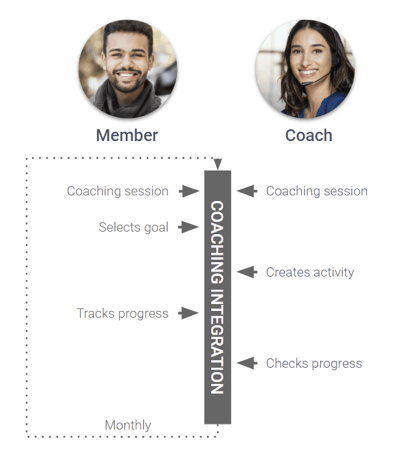 There is no shortage of anecdotal evidence proving the efficacy of lifestyle coaching, but at least one clinical study has confirmed it can be highly effective in ensuring the success of a workplace wellness program.
There is no shortage of anecdotal evidence proving the efficacy of lifestyle coaching, but at least one clinical study has confirmed it can be highly effective in ensuring the success of a workplace wellness program.
It’s no wonder, then, that companies with over 80% corporate wellness engagement include employee lifestyle coaching in their offerings. We recommend the following best practices for lifestyle coaching in your workplace wellness program.
1. Make coaching available on-site.
Your employees are more likely to take advantage of coaching when they attend an on-site coaching event. Given the nature of “on-site” in today’s pandemic and post-pandemic world, this can also be done through a virtual kick-off event. By offering an on-site or virtual kick-off, employees experience a safe environment in which to try out coaching and establish rapport with their coach. From there, they can continue over the phone or even via digitally-enabled text apps. The key is starting off the coaching relationship on the right foot.
2. Put employees in charge of their coaches.
Lifestyle coaching is different from counseling in that the person being coached generally leads the process. We encourage companies to leverage this feature in their lifestyle coaching offering by allowing employees to be fully in charge of their coaching relationship. Let employees choose their coaches, encourage them to select how they will communicate (email, in-person, text, or video chat), and empower them to set the frequency of communication.
3. Integrate coaching in your wellness technology platform.
Make sure lifestyle coaches have access to your workplace wellness portal. This will allow them to connect with employees in another way by documenting and tracking progress. WellRight clients use our unique coaching tool to help their employees and coaches visualize goals and results. Coaches can engage members by creating activities and viewing their progress for optimal support.
4. Share success stories.
Employees are naturally more likely to take advantage of lifestyle coaching if they’ve heard about another employee’s successes. Work with your company’s lifestyle coaches to identify employee candidates whose success stories are inspiring. Of course, you’ll need to request approval to share their stories, but highlighting the accomplishments of an employee is an excellent intrinsic reward that encourages others to take advantage of coaching.
5. Demonstrate leadership support.
As you may have already noticed, a common theme throughout these best practices is leadership support. When it comes to coaching, we recommend going a step beyond sharing employee success stories and ask your organizational leaders to do the same. Employees are more likely to take advantage of coaching services when they know it is not just accepted but encouraged.
 Employee recognition has the greatest impact on engagement and it is clearly a factor among companies with high levels of workplace wellness program engagement. Here are best practices for building recognition and incentives into your workplace wellness program.
Employee recognition has the greatest impact on engagement and it is clearly a factor among companies with high levels of workplace wellness program engagement. Here are best practices for building recognition and incentives into your workplace wellness program.
1. Align rewards with workplace wellness program goals.
Your Wellness Champion Network should design a workplace wellness program tied to corporate goals pertaining to employee performance, reduced absenteeism, and other measurements that impact overall company performance. In turn, rewards should be aligned with those goals. Companies with high workplace wellness engagement reward employees for the behaviors that contribute to overall organizational objectives.
2. Reward based on employee motivation.
Great managers know that motivation takes on different forms. Some team members are motivated by financial reward and others by public recognition. The same principle applies to wellness program rewards.
Survey your employees to find out what types of rewards will make them feel like their accomplishments are worth the work. You don’t have to give every employee the same reward. Even if all employees respond that they want monetary rewards, offer a variety of options such as gas or grocery gift cards, lunch vouchers, and prepaid credit cards. Some non-monetary reward ideas include an extra day off, a premier parking spot, or public recognition for winning a personalized award.
Did You Know? WellRight’s workplace wellness platform includes reporting that helps you manage the tax implications associated with offering rewards.
3. Offer incremental rewards.
Workplace wellness program engagement is a long game, but people naturally crave instant gratification. Waiting until the end of the year to reward employees can cause a drop off in participation.
Companies with high levels of wellness program success keep their employees invested in challenges week after week, month after month, and year after year. They do that by giving out rewards along the way. At WellRight, we call these “partial credit” rewards. They are the highly effective “carrots” that keep employees motivated. Our partnership with Achievers offers companies a platform to give company-wide recognition to employees throughout the year.
A good rule of thumb is to reward incrementally based on challenge timeframes. If your program challenges change quarterly, make sure to give incremental rewards at the end of each quarter. You can also set up incremental rewards for each challenge, giving employees “bragging rights” during the year, with program-wide rewards at the end of the year.
Another approach to rewarding along the way is giving employees “credit” for participation using a points system. Award participation points regardless of how well an employee does in a challenge (and even if they don’t complete the challenge). This is especially effective for employees who are participating in a wellness program for the first time. Offering some type of credit for effort can be the motivation an employee needs to keep going.
4. Level the playing field.
Everyone’s wellness journey is different. Some employees have a long history of personal wellness and may find your company’s challenges easy to accomplish, while others may be addressing their health and well-being for the first time.
Make sure your rewards are based on participation, not on an arbitrary level of fitness. For example, employees could be rewarded for spending two hours per week performing any sort of outdoor activity, whether it’s gentle activities like walking or light gardening, or intense activities like running or mountain biking. This is particularly important when it comes to employees who may be older or who have disabilities—the last thing you want to do is inadvertently penalize them for not being able to do the same activities as their coworkers.
Focusing on consistency and the formation of healthy habits will encourage employees to be competitive with themselves, not their peers, which will also contribute to long-term engagement in the program. WellRight offers a library of over 400 wellness challenges that can be customized to accommodate the diverse wellness journeys of a company’s workforce.
5. Right-size rewards.
Your reward system should take into account a number of factors, including the role of the person being rewarded: You may not want to give the same reward to an intern or a spouse that you would give to a full-time employee. Make sure to distinguish different rewards for different groups:
- Type of employee (full-time, part-time, union, non-union)
- Health plan selections (HMO, PPO, HSA)
- Employee versus spouse or family member
This right-sizing of rewards will ensure that everyone is included while making sure that rewards are considered fair by your employee population.
 We can’t overstate this: How well you promote and communicate your workplace wellness program is key to its success. Here are best practices to create interest and keep employees engaged.
We can’t overstate this: How well you promote and communicate your workplace wellness program is key to its success. Here are best practices to create interest and keep employees engaged.
1. Use a three-pronged approach.
At WellRight, we talk about a “three-pronged approach” to communicating your wellness program. Based on our experience and the success of our clients with high engagement, we’ve learned that the most effective way to share information about your program is to start with key stakeholders, followed by educating your employee population, and then allowing the system itself to take over from there. Here’s what that looks like in practice:
 Stakeholders
Stakeholders
Provide your Wellness Champions and company managers key message points about the program. Elaborate on specifics as needed, but make sure they understand the goals, strategy and tactics involved.
 Employee population
Employee population
This is your internal marketing campaign that delivers information about program goals and objectives, creates excitement, and persuades employees to sign-up and participate.
 System
System
Ensure all employees receive regular updates, information about events, wellness-related articles, and announcements pertaining to progress and success.
2. Brand your wellness program.
Companies with great wellness program engagement promote their corporate wellness programs like a product or service that is being marketed to customers—in this case, their employees. Your wellness program should be branded and have its own voice, a logo, a tagline, and messaging.
WellRight offers clients the option of white labeling our programming and platform, so your company can use the logo, colors, and messaging of your choice. What’s important is that you market your wellness program internally as strongly as you would any of your products or services to encourage the highest level of engagement.
3. Target member communications.
Once your workplace wellness program is underway, make sure your communications are targeted by age group, risk level, location, and any custom characteristics that encourage participation and keep employees engaged. Your wellness portal should have filtering options that allow you to cater messaging to specific groups based on their demographics, goals, health plan choice, employee category, and even health risks. The more specific and personal your messaging, the more likely employees will remain engaged.
4. Leverage all mediums.
Companies with successful workplace wellness programs leverage every channel available to keep employees and stakeholders informed about program updates, rewards, and helpful information. Use as many mediums as possible to make sure you are reaching all employees regardless of their communication preferences and access:
 Newsletters
Newsletters
Branded online newsletters can include health-related articles, an events calendar, and success stories.
 Interactive bulletin boards
Interactive bulletin boards
Interactive bulletin boards in high traffic areas like cafeterias, break rooms, employee-only restrooms, and meeting rooms are useful in promoting upcoming programs, monthly health themes, and current program participation status totals.
 Corporate messaging platforms
Corporate messaging platforms
Use tools like Slack and other corporate messaging platforms to acknowledge and encourage individual employees and teams.
 Emails
Emails
Work emails are a great way to communicate pertinent information. Make sure subject lines are clear and engaging and use a consistent “from” email sender name and address so people recognize them in their inbox. You can also use emails to share offers from wellness vendors or partners.
 Face-to-face
Face-to-face
Update employees at all-hands meetings and their individual team meetings.
 One great way to kick off your workplace wellness program is with a biometric health screening event. Biometric health screening offers a baseline to measure the health of your employee population as well as individual employees. It also helps employees relate workplace wellness challenges to their personal health goals. From our research, we know that companies with over 80% workplace wellness engagement include biometric health screening in their programs.
One great way to kick off your workplace wellness program is with a biometric health screening event. Biometric health screening offers a baseline to measure the health of your employee population as well as individual employees. It also helps employees relate workplace wellness challenges to their personal health goals. From our research, we know that companies with over 80% workplace wellness engagement include biometric health screening in their programs.
1. Integrate biometric health screening throughout the program.
Integrate biometrics in your wellness portal with updates and tracking that show employees how well they are doing in improving their health while participating in wellness challenges. Integration also provides the opportunity for lifestyle coaches to make suggestions to employees and help them achieve their goals related to BMI, weight, blood pressure and other biometrics.
2. Provide choices for biometric health screening.
One of the major themes in all the best practices for workplace wellness success is choice. Employees will be more likely to participate and stay engaged if they feel they have some level of control in the process. This is especially critical for biometric screening, whether you are asking employees to establish a baseline or track progress.
Give employees the option to take advantage of onsite screening, if you can make that available. You can also direct them to a participating lab or allow them to provide physician forms. With the varying thresholds and requirements for social distancing related to the pandemic, employees will definitely want to choose where they do their biometric health screening based on their level of comfort.
One advantage of using WellRight’s platform is that it is partner-agnostic for biometric health screenings. Data from any partner can be uploaded into the employee’s wellness platform. We also offer a biometric scheduler and event sign-up for flu shots, fitness classes, and training sessions.
3. Include family members.
Creating support systems for your employees is a fantastic way to encourage workplace wellness engagement, and one of the best support systems is family.
We recommend including employees’ family members in biometric challenges for free, regardless of whether they are on the employee’s health plan. WellRight’s platform has a “family invite” feature that makes it easy to include family members in specific challenges.
 Companies with great workplace wellness program engagement typically include biometric outcomes measurement in their programs. Here are our best practices for making these types of program outcomes both appealing and achievable for your employees.
Companies with great workplace wellness program engagement typically include biometric outcomes measurement in their programs. Here are our best practices for making these types of program outcomes both appealing and achievable for your employees.
1. Make biometric challenges optional.
A company’s workplace wellness program shouldn’t feel prescriptive or obligatory. The key to engagement is providing all employees a chance to succeed in their own way. Your program should set goals for biometric outcomes where achievement is optional and merits special rewards.
The most successful workplace wellness programs add bonus points when employees improve their BMI, cholesterol, weight, blood pressure, and other biometrics. They don’t make those measurements a minimum requirement to get a reward. But, by accomplishing those goals on top of performing well in program challenges, employees are more likely to earn an ultimate reward at the end of the year. This, in and of itself, can create excitement and increase employee engagement.
2. Measure each biometric goal separately.
Remember, the goal is to encourage employees to participate and achieve their personal health goals for optimal professional performance and lasting wellness. Companies with workplace wellness success create biomarker challenges that set employees up for success.
For example, you may create a cholesterol challenge that measures LDL and HDL. This would be separate from a blood pressure challenge or a BMI challenge.
While all of the biometric outcomes can contribute to an overall goal for the employee and, ultimately, the program, creating separate challenges provide opportunities for employees to experience wins and receive partial credit throughout the year.
3. Measure improvement versus specific targets.
Making changes to biometrics like weight and BMI are difficult enough. For example, there are a number of factors that can impact a person’s ability to gain or lose weight. One of the best ways to discourage employees in a weight loss challenge is to give them a specific weight goal and make their success contingent on a number.
Instead, focus on the improvement of specific biometric markers. A 5% improvement in an employee’s waking glucose levels is an excellent outcome, even if the employee hasn’t lost a pound. Focusing on small, attainable improvements and not an unrealistic goal makes biometric challenges more attractive and creates more potential for success.
4. Be proactive with communications.
Let your employees know well in advance about the biometric challenges you plan to offer, introducing target goals and measurements with clear expectations and timelines. Hold workshops on how to achieve those goals and make sure your lifestyle coaches are prepared to provide support. Not only will this get employees excited about the challenges and how achieving them will impact their lives, but it will also set them up to succeed.
5. Offer a variety of information and education channels.
Making the types of lifestyle changes that improve biometric outcomes is hard work. Employees need resources and education to support them in achieving their goals. In addition to online materials and lifestyle coaching integration, partner with your workplace wellness provider to identify the workshops, coursework and supplemental resources that will be most useful for your Wellness Champion Network and your employees.
At WellRight, our on-demand workplace wellness learning labs cover the six dimensions of well-being and include gamification to increase engagement. In addition, our wellness program platform offers event scheduling functionality that can be customized to include specific employee groups or your entire employee base.
Creating a successful workplace wellness program involves a combination of committed leadership, continuous communication, coaching support, a well-designed incentive structure, and a platform that allows everyone in the company to visualize individual and program progress.
If your company is interested in creating a workplace wellness program that gets people engaged, excited, and enjoying better health WellRight can help.







